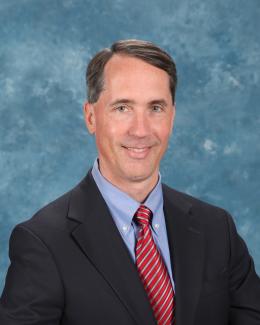ICONS participants gathered virtually for a series of sessions about the current state and future possibilities of neuromorphic computing. Credit: Katie Schuman/Oak Ridge National Laboratory, U.S. Dept. of Energy
In late July, staff from the Department of Energy’s Oak Ridge National Laboratory hosted the third annual International Conference on Neuromorphic Systems, or ICONS. Like many conferences in 2020, ICONS took place entirely online to ensure the safety of organizers, speakers and attendees during the COVID-19 pandemic.
By providing a forum for scientists and engineers to discuss, present and publish their research, ICONS helps advance neuromorphic computing, which is a relatively new field that involves designing and developing artificial hardware and software capable of imitating the functionality and efficiency of the human brain.
Organized by a team led by conference chair Thomas Potok, who leads ORNL’s Computational Data Analytics Group, the three-day event included prerecorded paper and poster sessions that were available online one week in advance, as well as live special sessions and talks featuring experts from around the world.
Participants heard from keynote speakers Gert Cauwenberghs and Duygu Kuzum of the University of California, San Diego; Akira Hirose of the University of Tokyo; and Sander M. Bhoté of the CWI Machine Learning group, the University of Amsterdam and the University of Groningen.
Each contributor provided insights into the architectures, models and applications of neuromorphic systems and facilitated ongoing discussions in the neuromorphic computing community. Other themes discussed throughout the conference included familiar topics, such as training and improving spiking neural networks, and novel areas of study, such as the intersection between neuroscience and artificial intelligence.
According to ORNL computer scientist and ICONS program committee chair Katie Schuman, the primary theme that emerged from this year’s conference was the importance of codesign — the simple yet vital idea that international neuromorphic researchers must join forces to make significant progress.
“The presenters were speaking from different geographic areas and different areas of expertise, so it was interesting to see how many of them noted the need to facilitate close collaboration between the people who develop algorithms and applications and the people who develop devices and materials,” she said.
Although virtual settings make spontaneous discussions more difficult and necessitate the navigation of global time zones, the new format also led to higher attendance numbers. Because of lower registration fees and increased accessibility, ICONS 2020 had 234 attendees — about 100 more than ICONS 2019. Participants logged on from 22 U.S. states and 18 countries, and organizers received and published 28 papers in the conference proceedings.
To emulate the in-person experience, some students and professionals presented their research by discussing the papers they wrote for ICONS, whereas others competed in a poster “slam” with strict time limits. Paper and poster presenters participated in longer Q&A sessions, which allowed more time for discussion than is typically possible in a traditional conference setting.
For the first time, the conference also facilitated a doctoral consortium, which allowed several Ph.D. candidates to present their research, answer questions and attend a networking breakout session focused on pathways to potential neuromorphic computing careers in government, industry and academia.
During a special session on benchmarking and metrics at the end of ICONS 2019, the steering, organizing and program committees expressed interest in expanding neuromorphic computing research beyond image classification, which tends to dominate the field. This year, participants covered a much broader range of applications.
“We read and heard a lot about applying neuromorphic techniques to complete robotics and control tasks, as well as to interpret novel sensor data,” Schuman said. “After we explicitly challenged the community last year with tackling different applications, it was exciting to see so many people respond by shifting their research.”
At a similar session that concluded this year’s event, the organizers established goals to create an even tighter codesign integration loop and develop additional community-driven benchmarks and challenges for neuromorphic researchers to solve together.
Neuromorphic computing shows promise to lead a new era following the anticipated end of Moore’s law, which is the historical observation that computing power steadily increases over time. But regardless of whether Moore’s law ends anytime soon, ICONS consistently generates support and community buy-in for nontraditional computing structures.
“There will be a future in which computers look very different than they do today, and they will only become even more exotic and specialized moving forward,” Schuman said.
This conference was supported by DOE’s Advanced Scientific Computing Research program.
UT-Battelle manages Oak Ridge National Laboratory for DOE’s Office of Science, the single largest supporter of basic research in the physical sciences in the United States. DOE’s Office of Science is working to address some of the most pressing challenges of our time. For more information, visit https://energy.gov/science. — Elizabeth Rosenthal




